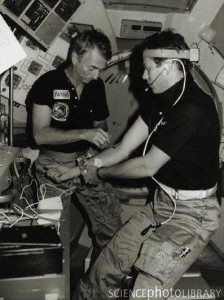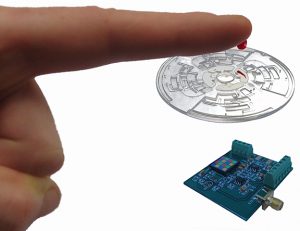Just one drop of blood is enough to diagnose a broad variety of diseases such as diabetes, heart malfunctions, kidney or liver damage. Results are available within minutes. The new device, developed by Irish private company Radisens Diagnostics is currently being adapted by ESA for use aboard the International Space Station to monitor astronauts’ health. The contract was signed on October 28.
“Biochemical analysis aboard the Space Station is becoming a high priority for the human physiology experiments carried out there,” explained Nadine Fritz of ESA’s Directorate of Human Spaceflight and Operations. “The retirement of the Space Shuttle has significantly reduced the amount of cargo we can download from the Station, so it makes sense to do what analysis we can do in orbit.”
The adaptation of a ground-based technology will include expansion of the variety of possible tests as well as adjustment of the technology for the space environment. Researchers must still ensure that the technique will work well in microgravity.

Compared to traditional methods, space-based diagnostic technologies allow more tests to be performed simultaneously with results delivered within minutes (Credits: NASA).
The basis of the technology is a mini-disc device embedded with a variety of miniaturized test procedures. A pinprick of blood is added and the disc is then inserted into the ‘point-of-care’ device and set spinning to spread the blood sample across the surface. Multiple tests are performed simultaneously, with automated results delivered within a matter of minutes.
This project is part of ESA’s General Support Technology Program (GSTP) that aims at developing promising prototypes into space-ready hardware. To qualify for the program, technologies must be market-oriented with development costs shared between ESA and the development company.
In the video below, RT News explores some of the medical technologies that came out of the Russian space program and are now used are Earth
















































![A trajectory analysis that used a computational fluid dynamics approach to determine the likely position and velocity histories of the foam (Credits: NASA Ref [1] p61).](http://www.spacesafetymagazine.com/wp-content/uploads/2014/05/fluid-dynamics-trajectory-analysis-50x50.jpg)



Leave a Reply